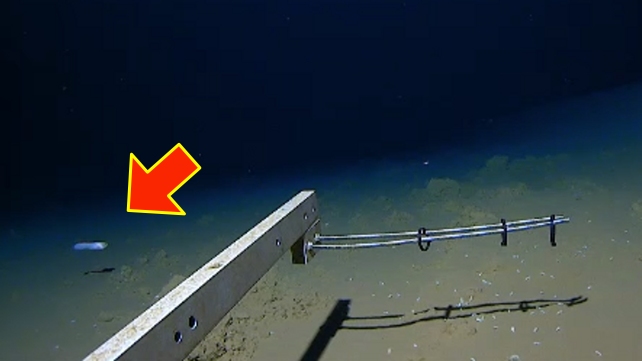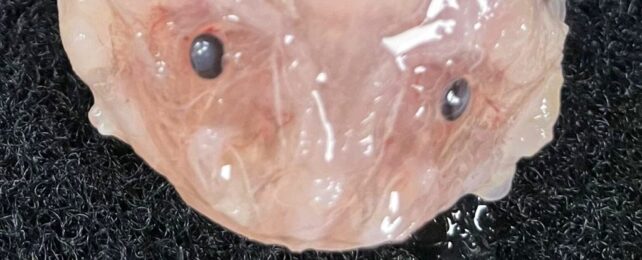Scientists photographed a snailfish swimming 8,336 meters below sea level near Japan, making it the deepest recorded fish ever caught on camera.
Previously, the deepest recorded fish was spotted 8,178 meters down in the Mariana Trench, according to BBC News.
Scientists dropped an autonomous "lander" camera into the Izu-Ogasawara Trench near Japan and filmed the snailfish that they estimated to be at or "very close to" the maximum depth that any fish can survive, according to BBC.

"If this record is broken, it would only be by minute increments, potentially by just a few meters," Prof Alan Jamieson, a University of Western Australia deep-sea scientist, told the outlet.
The snailfish was a juvenile of the species Pseudoliparis, however, scientists did not capture a specimen to fully identify the species, according to BBC. Instead, the researchers trapped several fish slightly higher up in the water at 8,022 meters, which were identified as Pseudoliparis belyaevi, and set the record for the deepest fish ever caught, according to the outlet.
The previous deepest recorded fish in the Mariana Trench was identified as a Mariana snailfish, which had been known to scientists since 2014, Insider reported at the time. Snailfish live in the deepest part of the ocean, known as the hadal zone, where depths reach 6,000 to 11,000 meters and no light penetrates, according to the National Oceanic and Atmospheric Association.

Jamieson speculated that the fish were able to survive greater depths than those found in the Mariana Trench due to the Izu-Ogasawara's slightly warmer waters, the BBC reported.
"We predicted the deepest fish would be there and we predicted it would be a snailfish," Jamieson said according to the outlet. "I get frustrated when people tell me we know nothing about the deep sea. We do. Things are changing really fast."
This article was originally published by Business Insider.
More from Business Insider: